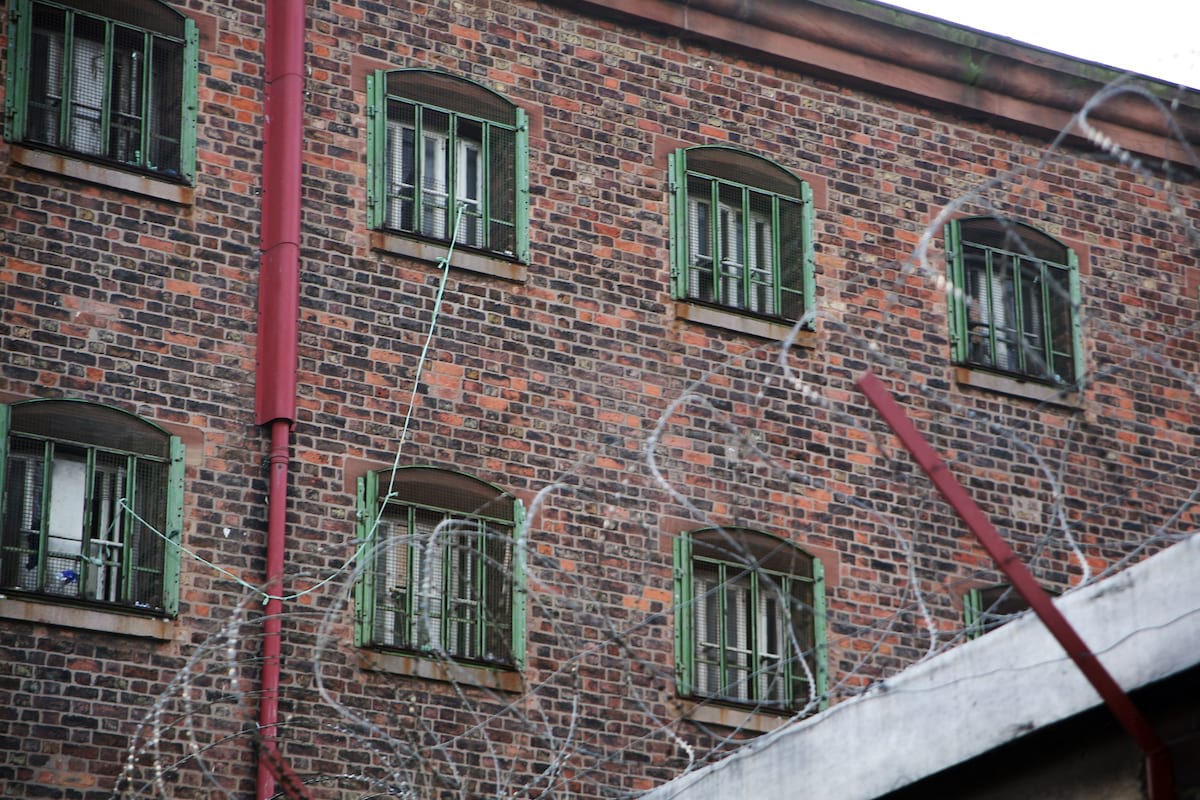Last week the Independent Monitoring Boards published its annual report on the state of our prisons. IMB members publish an annual report on each individual prison establishment and this annual report brings together those findings for the period from late 2017 to 2018.
The report describes this period as one when the great majority of prisons were emerging from a significant crisis: the combined impact of serious staffing shortages and an influx of new psychoactive substances, compounded by inadequate maintenance arrangements. It therefore chronicles a system that was overall in slow and sometimes fragile recovery, dealing with the after-effects of that crisis, both for prisons and the treatment and potential rehabilitation of prisoners. It also raises some underlying issues that directly affect prisoners, but which are not under the control of the prison or criminal justice systems: such as the availability of mental health services and post-release support, particularly housing.
Dame Anne Owers, a previous Chief Inspector of Prisons, is the National Chair of IMBs and notes in her introduction:
In my own visits to prisons, I could not help but be struck by the visible decline in safety, control and the expectations of both prisoners and staff since I last visited them, as Chief Inspector of Prisons, in 2010.
What are IMBs?
Inside every prison, immigration removal centre and some short term holding facilities at airports, there is an Independent Monitoring Board (IMB) – a group of ordinary members of the public who are independent, unpaid and work an average of 3-4 visits per month. Their role is to monitor the day-to-day life in their local prison or removal centre and ensure that proper standards of care and decency are maintained.
Members have unrestricted access to their local prison or immigration detention centre at any time and can talk to any prisoner or detainee they wish to, out of sight and hearing of a members of staff if necessary.
Findings
Here are some of the key findings from the report; despite the prospects of possible future improvements, the current situation raises many very real concerns.
Reinvestment
The report highlight some promising initiatives under the prison reform programme but notes that it will take time for prisons to stabilise again, let alone make real progress:
- the roll-out of offender management in custody (OMiC)
- the prison estate transformation programme
- lessons learnt from the then Prisons Minister’s ten priority prisons project, and responses to the Inspectorate of Prisons’ urgent notification process
- revised processes for supporting prisoners at risk of suicide and self-harm
- the new drug strategy
- embedding the CSIP (challenge, support and intervention) process for violence reduction
- new processes and contracts for dealing with prisoners’ property.
Staffing
Staffing issues dominated annual reports in this period. They affected every kind of prison and every aspect of prison life: from security and safety to healthcare, activities and rehabilitation. During this period, boards were reporting the arrival of new staff, and in most cases an end to the severe regime restrictions which had characterised the previous year. But the impact of staff shortages was far from over. There were still significant difficulties across nearly all kinds of prisons: some were still struggling to deliver acceptable and consistent regimes, and nearly all were expressing concerns about the safety implications of a high proportion of inexperienced young staff, as regimes were gradually being relaxed and prisoners were out of their cells for longer.
Drugs
The easy availability of drugs and the damaging impact of New Psychoactive Substances in particular dominated many individual IMB reports. The Boards welcomed some improvements in security as a first step but noted:
It is necessary also to tackle demand, particularly if drug-using prisoners are to be rehabilitated. They [Boards] pointed to the importance of dynamic security – the relationships with staff that can both detect and prevent substance abuse – as well as to the link between lengthy lock-up and lack of purposeful activity and the frustration, boredom and depression that create a ready market.
Safety
Monitoring the safety of prisoners is one of boards’ particular responsibilities as part of the UK’s National Preventive Mechanism (NPM) under the UN Optional Protocol against Torture. Nearly all boards, across the prison estate, raised heightened concerns about safety in the prison. In general, incidents of violence and self-harm increased, often significantly, throughout 2018. Boards attributed this to a combination of the availability of drugs (and the associated debt and bullying), the inexperience or shortage of staff, and frustration due to inactivity. Boards in almost all local prisons reported significant rises in violence and assaults by prisoners: doubling in Bedford, Durham, Belmarsh and Wandsworth, and rising for the third year running in Bullingdon. Birmingham ‘stabilised’ at the high level of 120 assaults a month.
Prison conditions
The picture painted in nearly all annual reports is extremely depressing, with failures, sometimes compromising health and safety, across all kinds of prison and in all areas. Four boards described conditions as ‘squalid’; others as inhumane and unfit for purpose.
Healthcare
Many boards reported the effects of staffing shortages, both of uniformed and healthcare staff. Sometimes there were not enough uniformed staff to escort prisoners to appointments, either within the prison or to external hospitals; staff shortages also impacted on the supervision of medication queues. Shortages of nursing staff, particularly mental health nurses, led to long waiting times, over-high caseloads and reliance on expensive agency staff with no continuity of care.
Purposeful activity
During the reporting period, boards reported the impact on education, training and activity of issues already referred to: staff shortages and maintenance failings. The former could result in lockdowns or insufficient uniformed staff to escort prisoners to activities; the latter led to workshops or classrooms being unusable for long periods. Boards also raised concerns about the amount and suitability of the activities available, and the processes for allocation and ensuring attendance.
Thanks to Andy Aitchison for kind permission to use the images in this post. You can see Andy’s work here.










One Response
Last year it was necessary for me to visit a 39 yr old man in prison and although he was considered to be a criminal and ready for deportation there was confusion about whether he was in prison or in the deportation centre. I visited him on five occasions and despite the fact that he had an SEN statement and was dyslexic as well as being a victim of CSA in his birth country, deportation papers were served on him and he could not read these: eventually he was provided with basic literacy sessions. Although there was bullying between inmates and I actually witnessed a drug exchange taking place while wardens were standing around, this man developed the confidence to stand up for himself and he learned to cook: communication was poor between prison staff and this man and he was terrified of being deported. A real breakthrough came when I wrote to Sajid Javid, minister, and the man’s parents scraped together enough money for him to engage a barrister, I researched his background and history and we won his case: despite deliberate unhelpfulness by prison staff and a lack of clean clothes, it was arranged that he should have equine therapy in prison and this proved life changing for him. He was released without warning and is now holding down a part time job and is reading well, he has continued to attend the gym and to eat healthily. Despite evidence of emotional cruelty by some prison staff and by a Home Office case worker, this man’s twelve month stay in prison had good outcomes for him in terms of developing life skills: he helped out the prison staff and earned incentives but better communication from prison staff and the Home Office could have avoided the lengthy time in prison, he was told that he had cleared an earlier crime before entering prison and the high cost of his internment was unneccessary. He did not complain about the poor conditions inside prison and focussed on improving his life style. The problems could have been addressed through staff training and strong leadership and drugs were rife: I did not report the drug handover which I witnessed because this man could have suffered from retaliation but it was a clever transaction. With thought and investment more prisons could change people’s time inside for the better.